Autonomous heating in the apartment: a comparison of various options for the arrangement
Having equipped autonomous heating in the apartment, the owners increase the comfort of the home and save on utility bills. Of course, first you have to decide on the type of heating system, create a project and get the necessary permits from utilities.
But the efforts and labor costs are justified over time, and the room becomes warm and comfortable all year round for less money. What heating option to choose and what will be required for its arrangement? It is precisely these issues that our article is devoted to. We will also consider in detail the procedure for documenting the transition to autonomous heating.
The content of the article:
General Description of the Autonomous System
An independent heating system is equipment for the heat supply of a dwelling that is not connected to common trunk networks.
With proper implementation, the complex provides property owners with optimal living conditions and makes it possible not to depend on interruptions in the centralized supply of the heating resource.
Among the main advantages of individual heating systems are the following items:
- instant adjustment of the heat level in the apartment and the ability to set the heating temperature personally for you;
- financial savings on utility bills;
- operational simplicity and availability;
- high level of efficiency and high-quality heat transfer;
- reliability, safety and durability of equipment.
It is these parameters that attract consumers and make autonomous complexes in demand.
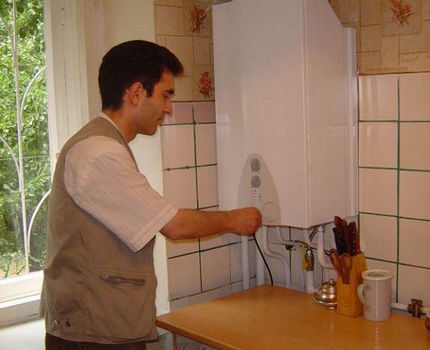
Types of independent heating units
The most popular autonomous heating units include heating boilers, floor heating systemsworking on different types of resource, solar panels, collectors and heat pumps. In a private house, you can equip any of these heating options or even combine a complex system of 2-3 types of equipment.
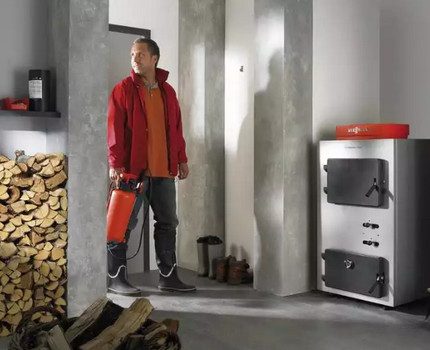
In an apartment building, the situation is more complicated and the use of most of the above heating units disappears immediately for objective reasons.
Some types of equipment cannot be installed in an apartment from either a technical or practical point of view. The use of others is limited by state and municipal laws, while still others may interfere with the interests and comfort of the neighbors living nearby.
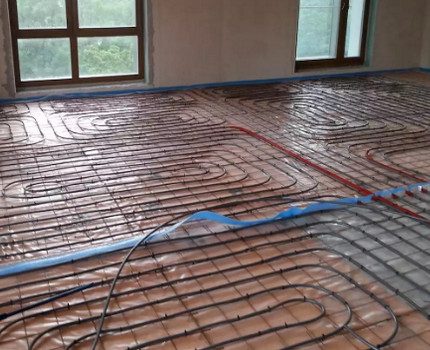
These nuances significantly narrow the search for suitable equipment, eventually reducing it to 2-3 heating systems. Each of them has its own specific advantages and small, but significant disadvantages.
The choice of the best option is made individually for each case, taking into account the temperature characteristics of the region, the area and layout of the room to be heated, the availability of heating resources, the specific power and efficiency of the working units, as well as the total cost of installation and installation activities.
Features of choosing a heat source
The choice of a suitable heat source for autonomous heating in an apartment is a responsible and serious question. Inattentive attitude to the situation will lead to the fact that the new heating system simply cannot cope with the tasks and cannot provide the proper level of comfort in the living room.
Cold Area Heaters
If the property is located in a region characterized by harsh winters and aggressively low temperatures, only autonomous gas-fired equipment will provide maximum efficiency and high heat levels compared to central heating systems.

All other sources of thermal energy will not give tangible benefits, and the effort spent on the purchase of equipment, redevelopment of the premises and obtaining permits will be in vain.
Heating systems in warm regions
In areas with a milder, warmer climate, in addition to main gas, it is important to use electricity for heating. Systems running on this resource are distinguished by operational convenience and a high level of security, but you cannot call them economical. With direct heating, the equipment “wraps” a decent amount, and payment of the communal apartment flies to the owners a pretty penny.
In order to spend energy wisely and not spend huge amounts of money monthly on accounts, owners are advised to install heat pumps. The principle of operation of these progressive devices is not built on direct heating of the air, but on the transfer of heat from a low potential source.
This functionality allows you to reduce electricity costs by 3-5 times, without lowering the level of comfort in residential premises.
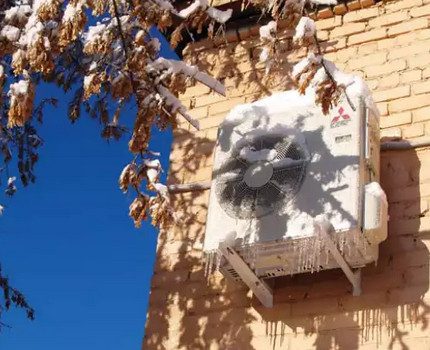
However, due to the specific location and layout, it is objectively impossible to install pumps using geotemal heat or the energy of nonfreezing open water bodies in apartment buildings. The equipment that heats the room by taking heat from the surrounding air remains available for installation in apartments.
Another good option for heating city apartments is the "heated floors" system, which runs on electricity. But its arrangement requires significant financial resources and increases the load on the central power grid.
If you plan to use the system as the main source of heating, it should occupy at least 70% of the total area of the room. Otherwise, uniform comfortable heat in the whole apartment cannot be achieved.
Legal nuances of the issue
It’s just not possible to change central heating to an autonomous system. First, you will need to notify the local authorities in writing of your desire and wait for an answer from them. Whether it will be positive is unknown. The administration may refer to Art. 190 Federal Law and refuse the tenant in his request.
In court, such a verdict is recognized as unfounded, relying on a government decree N 307 dated 04/16/2012, detailing the procedure for connecting heat supply systems. This document describes in detail which local sources of thermal energy are allowed and which are prohibited for installation in multi-apartment buildings.
If a modern boiler is selected for installation that meets the requirements for equipment for equipping a home heating system, there is no reason for the tenant to refuse to install.
Documents for obtaining permission
For the correct rejection of centralized heating and the transition to autonomous, you will have to collect a package of documents.
It includes:
- a statement of the desired conversion of the heating system;
- title documents for the ownership of the apartment where it is planned to mount new equipment;
- technical passport that clearly describes the parameters and layout of the room (original, or a copy certified by a notary);
- project for the reconstruction of the apartment under the changed heating communications;
- written consent of all residents registered in the apartment;
- expert opinion of the department for the protection of monuments on the admissibility of work on the reconstruction of the premises.
Based on these papers, the management bodies issue a permit to disconnect the client from city communications.
Autonomous heating process
To order technical conditions for arranging individual gas heating, a written permission to disconnect the apartment from the central communications is sent to the local gas distribution company.
Within 10 days, specialists study the technical feasibility of installing the equipment and give the go-ahead (or failure) for the actual installation of the system.
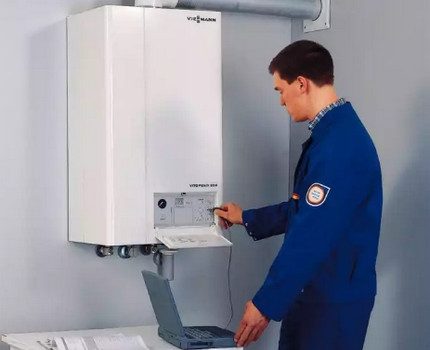
When the documents are received, the owners purchase a certified heating boiler and contact the design office to prepare the equipment installation scheme, taking into account all technical conditions, safety rules and the characteristics of a particular room.
At the same time, a heat supply organization is making a project to correctly disconnect housing from centralized communications. The basis for the procedure is a letter from the HOA confirming the permission of the authorities to transfer the apartment to an autonomous heating system.
Having all the necessary documentation in hand, property owners are sent to the fire company and there they receive an act confirming the fire safety of the developed project.

Then, the papers are submitted for approval, and the local administration considers the application for 45 days, and then allows or prohibits the conversion of the premises to autonomous heating. The reason for the refusal is Art. 27 LCD (not a complete package of documents provided). This decision can be appealed in court or, by adding the necessary certificates, apply again for approval.
Another serious reason is the inability to install a chimney or ventilation system that meets certain requirements.
How to calculate heating for an apartment?
To obtain the optimum temperature in the apartment, it is important, before installing the system, to correctly calculate the necessary specific power of the heating equipment.
In order for the result to be correct and maximally correspond to reality, it is necessary to take into account the real parameters.
All calculations are carried out according to the formula:
boiler = S * Wud. / 10 m²,
Where:
- S - total area of the room to be heated;
- W - basic boiler capacity per 10 m².
The data obtained are compared with the average specific power relevant in the region, and based on the results, a suitable boiler is selected.
Boilers for individual gas systems
Boilers using main gas in operation are the most practical option for arranging an autonomous heating system in a city apartment, provided that the right power is selected. We recommend that you familiarize yourself with power calculation example gas boiler.
Units are characterized by a high level of efficiency, reliably operate in intensive operation and serve their owners for a long time.
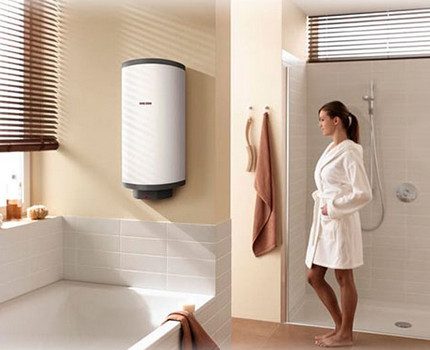
Modern models are equipped with a closed combustion chamber, a convenient electronic ignition and a programmable thermostat. Extensive functionality helps to maintain a suitable coolant temperature in the system around the clock, decreasing or increasing it as needed.
Features of single-circuit devices
Single-circuit gas boilers work only for heating. The function of providing housing with hot water is absent in them. In order to be able not only to live in a warm room, but also to use hot water to the required extent, customers buy capacious tanks with a built-in heat exchanger (indirect heating boiler) and connect them to the gas boiler.
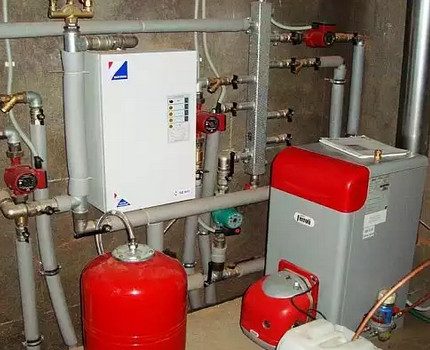
Single-circuit boilers are usually connected to a chimney with natural draft. In apartments without a chimney, progressive turbocharged boilers or parapet modules are installed, equipped with the function of forcibly withdrawing the resulting carbon monoxide from the premises.
The nuances of dual-circuit equipment
Double-circuit gas boilers are very popular among consumers.These units have an additional built-in heat exchanger and uninterruptedly provide the apartment not only with useful heat, but also with hot water.
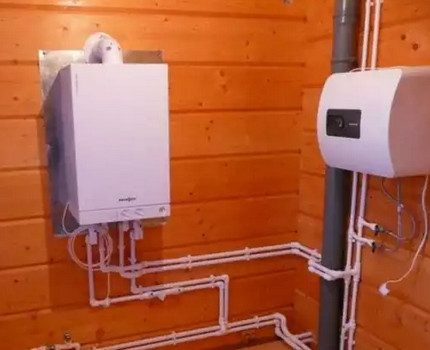
The basic power of the equipment varies from 17 to 35 kW. The actual power level is affected by the number of taps with hot water located in the heated room.
In order not to lose money with the specific power and the ability of the system to heat the desired room, the boiler is always purchased with a margin. This makes it possible to maintain the proper level of heat in the apartment and use hot water in the most comfortable mode.
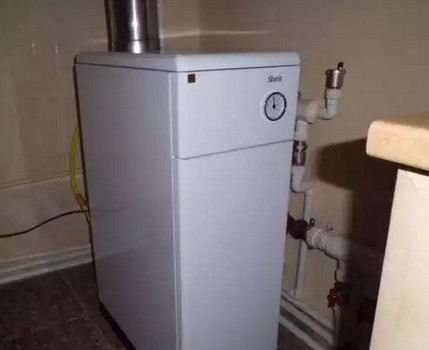
It is recommended to buy equipment only from official manufacturers that have high-quality certificates for the goods and provide a guarantee for their products. The serial number stamped on a certified boiler must match the one indicated in the accompanying documents. If the numbers on the unit and in the passport differ, it is worth giving up the purchase.
Pros and cons of gas installations
Modern models of gas boilers are almost completely automated. After mounting to the selected location and setting all the functions, they work completely autonomously and do not cause any inconvenience to the owners.
The built-in safety control system nullifies the potential gas leak and all the unpleasant moments associated with such a force majeure situation.
A wide range of equipment on the market enables consumers choose the best and the most convenient option for yourself and purchase it at a very reasonable price. The dimensions of the products make it possible to find a suitable device for both a small apartment with a complex layout and for spacious apartments.
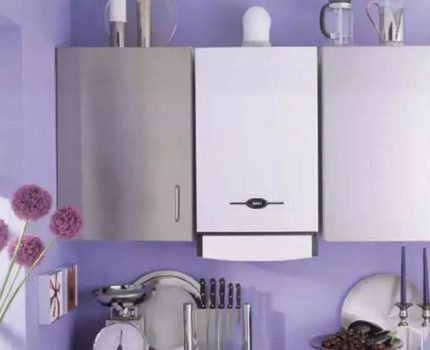
The boiler works very quietly and does not interfere with neighbors or apartment owners. The high level of efficiency of the module provides a comfortable and warm atmosphere in the living room and allows you to always maintain the selected temperature level.
Among the equipment deficiencies, such positions as:
- The potential for a gas explosion.
- Increased requirements for the arrangement of the ventilation system.
- Obligatory periodic cleaning of exhaust ventilation ducts from burning, soot, grease and other combustion products.
- Permission from special authorities for installation on the front part of the apartment building of a coxial chimney, removing the burnt resource from the premises.
- Constant increase in household gas prices for the population.
But, despite these disadvantages, many consumers dream of equipping the apartment with gas autonomous heating. Especially residents of the cold northern regions are striving for this, where full heating of the premises with other resources is simply impossible.
Autonomous systems on electricity
Actual types of electric heating equipment, such as a boiler, a “warm floor” system and a heat pump, are considered relevant for apartments. They can be used individually or combined to achieve maximum heating effect.
Option # 1 - the benefits of using an electric boiler
The electric boiler has small dimensions and compact shape. This allows you to place it even in small rooms with a complex internal layout. In the process, it does not emit any harmful substances and does not require equipment of a separate exhaust system. It is easily mounted and demonstrates complete fire safety.
We recommend that you familiarize yourself with the principles and heating circuits based on electric boiler.
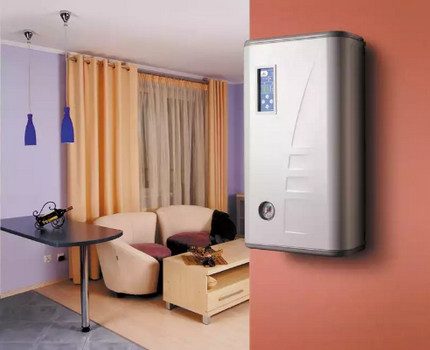
Comfortable control of the unit provides a temperature controller. It allows you to set a certain level of heating and makes it possible to heat the room in the most suitable mode for itself.
The electric boiler has practically no drawbacks, but is vulnerable to power surges. Therefore, for correct and long-term operation, it needs a reliable stabilizer.
Option # 2 - the advantages of the “warm floor” system
Usually, the electric underfloor heating system complements the basic heating equipment. It is mounted in rooms with a high level of humidity or laid in children's rooms and bedrooms.
We recommend that you read the instructions for electrical installation warm floor.
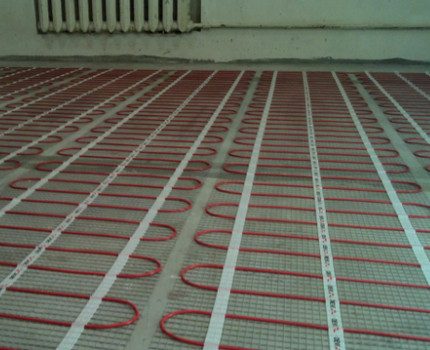
To use the “warm floor” as the main source of heating, you will have to equip them with most of the useful area of the apartment. Otherwise, the effectiveness will be too low and will not allow you to create a truly comfortable living conditions.
Option # 3 - the advantages of heating the apartment with a heat pump
Heat pumps are suitable for heating the apartment. Air-to-air or Air-to-water. They extract low-grade thermal energy from the environment and convert it to high-potential.
However, the operation of such equipment is effective only in rather warm regions where the air temperature in winter does not fall below -25 degrees.

Conclusions and useful video on the topic
Feedback on the autonomous heating system from a real user. The author tells in detail how practical and convenient it is to receive heat and hot water in a three-room apartment by using a gas double-circuit boiler.
Overview of an autonomous heating complex, consisting of an electric boiler and a "warm floor" system. Pros and cons of a combination of two types of heating equipment.
Useful tips on choosing a gas boiler for arranging a heating system in an apartment. Nuances and features of various heating appliances.
Arrangement of autonomous heating in a city apartment is a lengthy process that requires considerable effort and financial resources. The most difficult moment is obtaining permits to disconnect from centralized networks and subsequent redevelopment of the premises under the new system.
But you will have to go this way only once, and then you will no longer depend on interruptions in the supply of heat. In addition, it will be possible to more efficiently spend energy resources, save on utility bills and set the maximum comfort level for your apartment.
Do you want to switch to an autonomous type of heating, but you still have a number of questions that we did not address in this material? Ask them in the comments under the article - our experts and site visitors who are competent in this matter will be happy to share their knowledge and experience with you.

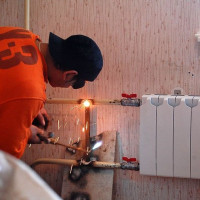 Individual heating in the apartment: the best options for an apartment building
Individual heating in the apartment: the best options for an apartment building  The calorific value of different types of fuel: a comparison of fuel by calorific value + table of calorific value
The calorific value of different types of fuel: a comparison of fuel by calorific value + table of calorific value  Do-it-yourself economical garage heating: how to reduce heat loss and the better it is heated
Do-it-yourself economical garage heating: how to reduce heat loss and the better it is heated 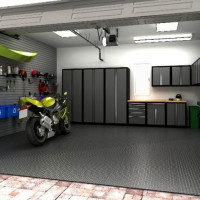 How to better organize garage heating: a comparative overview of the best ways
How to better organize garage heating: a comparative overview of the best ways 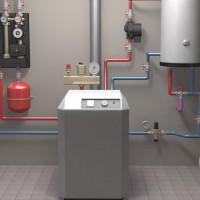 Economical heating of a private house: choosing the most economical heating system
Economical heating of a private house: choosing the most economical heating system 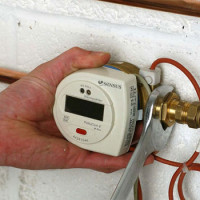 How to put meters for heating in an apartment: installing individual appliances
How to put meters for heating in an apartment: installing individual appliances  How much does it cost to connect gas to a private house: the price of organizing gas supply
How much does it cost to connect gas to a private house: the price of organizing gas supply  The best washing machines with dryer: model rating and customer tips
The best washing machines with dryer: model rating and customer tips  What is the color temperature of light and the nuances of choosing the temperature of the lamps to suit your needs
What is the color temperature of light and the nuances of choosing the temperature of the lamps to suit your needs  Replacement of a geyser in an apartment: replacement paperwork + basic norms and requirements
Replacement of a geyser in an apartment: replacement paperwork + basic norms and requirements
Independent heating is very popular in our city, winters are mild. Even from the central “jump” is quite easy, the process is debugged. We ourselves have a gas according to the project, there is a double-circuit boiler. In the winter months, the difference in the communal apartment turns out to be huge, in warmer times smaller, but also not bad, because hot water from the CHPP is expensive.
Plus - we can turn on the heating even in summer if it is too cold or humid.
From the commentary it is not clear where and in which city it is so easy to switch to individual heating.
In our Murmansk region, people, too, since the 2000s, and even earlier, switched to individual heating in apartments. And starting in 2017, the resource-supplying organization “Murmanenergosbyt” JSC in the courts won cases against apartment owners who switched to individual heating, referring to the fact that in the rules No. 354 for the provision of utility services, it is not possible to charge separately for heating the apartment and common house needs.
We reached the Supreme Court of the Russian Federation and all in vain, while the OFAS in the Murmansk region. failed to issue an order banning billing to individual heaters. But even these prescriptions are not a decree for Murmanenergosbyt JSC - it gives formal replies and continues to issue invoices. How to be
Something revered you and I did not want to consider the possibility of switching to autonomous heating. Courts, trials, nerves - is it worth saving all this? Utilities for every penny strangle themselves.
Hello. Once again, I studied the 354 resolution, far and wide, and did not find “the impossibility of charging a separate fee”:
“In a multi-apartment building, which is equipped with a collective (common house) meter for heat energy and in which at least one, but not all residential or non-residential premises are equipped with individual and (or) common (apartment) heat meters, the size of the payment for utilities for heating is determined by formulas 3 (1) and 3 (4) of Appendix N 2 to these Rules on the basis of indications of individual and (or) common (apartment) and collective (common house) heat energy meters“.
In accordance with article 539 of the Civil Code, the owner of the premises must pay for the services rendered to him. If the heating is autonomous, then the central heating services were not provided:
“Under an energy supply agreement, the energy supplying organization undertakes to supply energy to the subscriber (consumer) through the connected network, and the subscriber undertakes to pay for the energy received, as well as to observe the consumption regime stipulated by the agreement, to ensure the safe operation of the energy networks under its jurisdiction and the serviceability of the devices and equipment used by it with energy consumption“.
What kind of unsubscribes are there and how are they specifically motivated? There must be a written explanation.